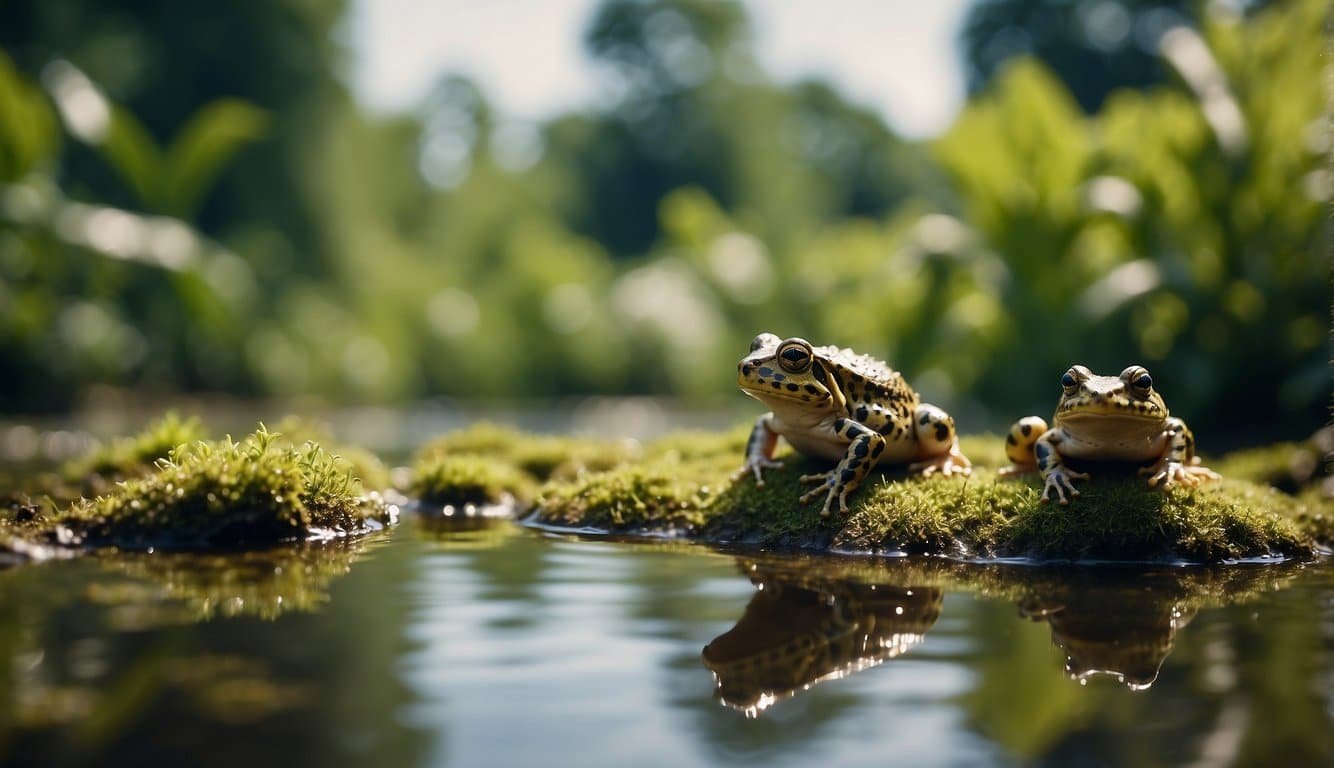Defining Amphibians
Amphibians are a fascinating group of vertebrates that include species such as frogs, toads, salamanders, caecilians, and newts. They are part of the subclass Lissamphibia, which is known for its unique life cycle and biological features. These creatures are a cornerstone in understanding the evolution of tetrapods, as they are some of the few vertebrates to live both in water and on land.
The most striking characteristic of amphibians is their life cycle, which involves a process called metamorphosis. For instance, a frog begins its life as a tadpole, which later transforms into an adult, losing its tail and developing limbs. In contrast, caecilians do not follow this pattern, as they give birth to live young or lay eggs that hatch into miniature versions of adults.
Amphibians are also known for their permeable skin, which plays a vital role in their respiratory process. Unlike other vertebrates, many species can absorb oxygen directly through their skin, although lungs or gills are also used, depending on the life stage.
These animals are ectothermic (often referred to as cold-blooded), meaning that they regulate their body temperature through external sources, like basking in the sun or retreating to cool, shaded areas. This characteristic has a significant impact on their behavior, activity level, and habitat preferences.
The order Anura encompasses the well-known frogs and toads. Caudata (or Urodela) includes salamanders and newts, characterized by their elongated bodies and tails. The lesser-known Gymnophiona is the group of limbless, serpentine-like amphibians called caecilians, often hidden from sight due to their burrowing lifestyle.
Discover more about the natural history of amphibians and the diverse species within this vertebrate class. They not only offer insights into the transition from water to land in animal evolution but also serve as important indicators of environmental health.
Habitat and Adaptation

Amphibians are remarkable creatures that exhibit a variety of adaptations allowing them to inhabit diverse environments across the globe. From forests to deserts, they’ve evolved to survive both in water and on land, demonstrating incredible flexibility in meeting the challenges of their habitats.
Aquatic and Terrestrial Environments
Amphibians thrive in both aquatic and terrestrial environments, often during different stages of their life cycle. Many species begin life as tadpoles in water, gradually transitioning to land as they mature. Their skin is pivotal for life in moist environments due to its permeability, which aids in cutaneous respiration. This feature enables them to absorb water and breathe without lungs in their larval stage, making habitats near water bodies—such as wetlands or ponds—crucial for the early part of their lives.
Respiratory Systems
As amphibians grow, their respiratory systems can be quite complex. Species like tadpoles often start with gills for underwater breathing, while adults can have lungs for breathing air. Some sustain their ability for cutaneous respiration, which allows for gas exchange through their moist skin—a key adaptation for life both in and out of water.
Sensory Adaptations
The sensory systems of amphibians are finely tuned for survival in their respective habitats. Their eyes have evolved for clear vision underwater and on land, accommodating significant shifts in light and environment. Their hearing is also specialized; organs like the papilla amphibiorum help them detect a range of frequencies, aiding in communication and predator avoidance. These adaptations give amphibians the edge they need to flourish in varying ecological niches.
Evolution and Classification

Amphibians are an intricate group with an evolutionary history that winds back over 300 million years. Their classification reflects a deep divergence from ancient fish-like ancestors, giving rise to the various amphibian forms we observe today.
Evolutionary History
The journey of amphibians begins in the Devonian period, where the first tetrapods emerged from sarcopterygian fish, ancestors known for their lobe-finned characteristics. This transition marked a monumental step in the history of life on Earth, as these early tetrapods evolved to exploit the diverse terrestrial environments. Moving forward into the Carboniferous period, the diversification of these creatures set the stage for amphibians’ evolutionary radiation, leading to a plethora of forms – some of which were impressively large compared to today’s standards.
It is during the Carboniferous that the first representatives of the subclasses which would lead to Lissamphibia, the group containing all modern amphibians, started to appear. This milestone in amphibian ancestry represents a quintessential example of adaptive radiation – the process where organisms rapidly evolve to fill various ecological niches.
Taxonomy and Orders
Amphibians are broadly categorized under the subclass Lissamphibia, which is systematically divided into three distinct orders. The first is Anura, the order comprising all frogs and toads. Anurans are the most diverse and populous of the amphibian orders, renowned for their powerful legs and exceptional jumping abilities.
The second order, Caudata, encompasses salamanders and newts, which are recognized for their elongated bodies and tails, and often their ability to regenerate lost limbs. Salamanders retain a strong resemblance to the early amphibians, offering insight into the group’s ancient origins.
Lastly, there is Gymnophiona, the order populated by caecilians – legless, burrowing amphibians often mistaken for worms or snakes due to their subterranean lifestyles. This group remains shrouded in mystery due to their elusive nature and the challenges associated with studying them.
The interrelationships and the phylogenetic tree of these orders continue to be a dynamic area of biological research, with DNA studies frequently shedding new light on the connections between these living relics of a bygone era and their place in the clade Lissamphibia.

